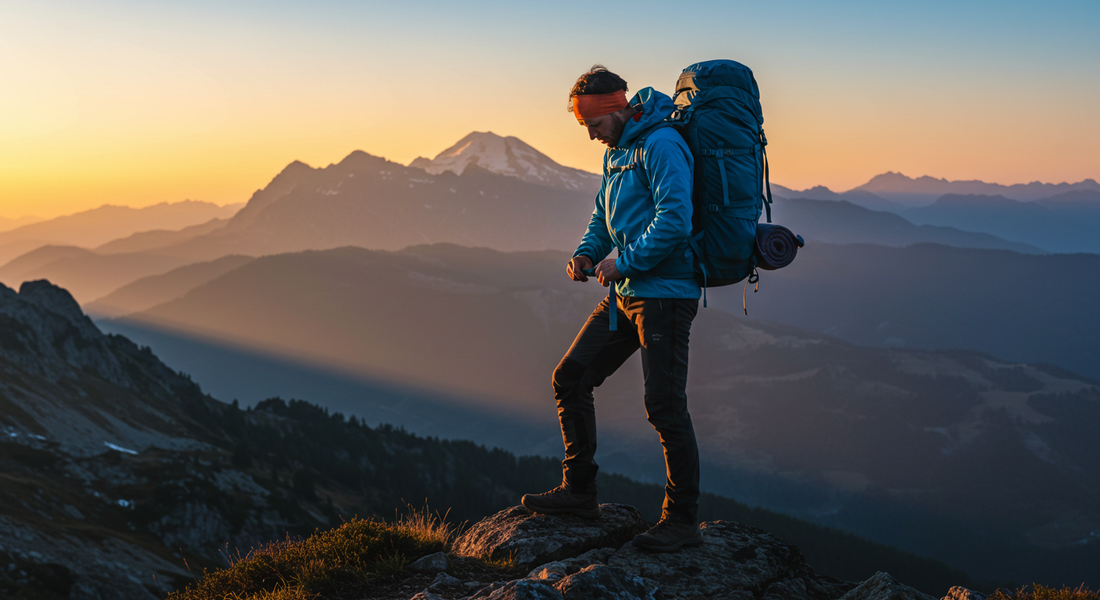
How to Pack Efficiently for Multi-Season Adventures: Smart Strategies for Minimal Gear
Share
1. Introduction: Packing Less, Experiencing More
When it comes to outdoor adventures, the difference between a stressful journey and a liberating one often lies in how you pack. Whether you’re hiking across alpine trails, camping by the lake, or heading into the wilderness for weeks, smart packing transforms the experience — giving you more comfort, freedom, and focus.
At Packstead, we believe in carrying only what matters. Efficient packing isn’t just about saving weight — it’s about creating balance between preparedness and simplicity. This guide will show you how to organize your gear for every season, maximize space, and keep your backpack adventure-ready year-round.
2. The Minimalist Packing Mindset
Before we talk gear, let’s start with philosophy. Efficient packing begins with a mindset — one that values functionality over quantity. Every item you bring should earn its place in your pack.
Ask yourself three questions before packing anything:
-
Does it serve more than one purpose?
-
Will I use it in every season or environment?
-
Is it worth its weight?
By viewing your pack as a carefully curated toolkit rather than a storage bin, you’ll naturally cut bulk and carry smarter.
3. Start with the Right Backpack
Your backpack is your mobile home. Choosing the right one sets the foundation for efficient packing.
Features to Look For:
- Size Matters: 40–60L for most multi-season trips; adjust depending on trip length.
- Internal Frame: Provides support and structure while distributing weight evenly.
- Compartments and Access: Top-load plus front or side access allows flexibility.
- Compression Straps: Keep contents compact and stable while hiking.
Pro Tip: Test-pack your backpack before your trip. Adjust straps and weight distribution to find the most comfortable fit for your torso and shoulders.
4. Categorize and Prioritize Your Gear
Efficient packing isn’t just about what you bring — it’s about how you organize it.
Break your gear into five essential categories:
-
Shelter & Sleep System – Tent, sleeping bag, pad, inflatable pillow.
-
Clothing Layers – Base, mid, and outer layers adaptable to any climate.
-
Cooking & Hydration – Stove, cookware, utensils, and water systems.
-
Safety & Navigation – First aid, tools, map, and emergency gear.
-
Personal Essentials – Hygiene items, electronics, and documents.
Pack from heaviest to lightest, placing dense items (like food or cooking gear) near your spine for stability. Lighter items like clothing and sleeping bags can fill the outer zones.
5. Packing Techniques for Space Optimization
1. Roll, Don’t Fold
Rolling clothes reduces wrinkles and saves valuable space. Compress soft items like shirts and base layers into stuff sacks or compression bags.
2. Use Packing Cubes
Separate items by function — one cube for clothes, another for sleep gear, and one for accessories. It makes unpacking faster and keeps your pack organized.
3. Fill Every Gap
Small spaces between items can fit gloves, socks, or compact tools. No space should go unused.
4. Keep Essentials Accessible
Keep quick-grab items — rain jacket, snacks, or headlamp — in exterior pockets or near the top. Nothing slows down a trip like digging through the entire bag for one item.
6. Multi-Season Gear Strategy
Packing for four seasons doesn’t mean bringing everything — it means layering smartly and using gear that adapts.
1. Modular Clothing System:
Choose pieces that can layer rather than packing season-specific items. A light base layer, an insulated mid layer, and a weatherproof shell can cover nearly all conditions.
2. Convertible Gear:
Opt for pants that zip into shorts, jackets with removable liners, or tents with detachable rainflies. These transform easily between warm and cold climates.
3. Multi-Use Accessories:
A neck gaiter can serve as a scarf, face mask, or pillow cover. Trekking poles double as tent supports for ultralight setups.
By focusing on versatility, you’ll reduce your overall pack weight without compromising readiness.
7. Weight Distribution and Comfort
Even with light gear, poor packing can lead to fatigue or imbalance.
Pack Layout Guide:
- Bottom: Sleeping bag and clothes (soft items create a base cushion).
- Center: Heavy items (food, cookware, stove) close to your spine for balance.
- Top: Lighter gear like jackets or electronics.
- Exterior: Tent poles, water bottles, or trekking poles secured with straps.
Adjust shoulder and hip straps frequently to redistribute weight and prevent soreness.
8. The Power of Pre-Trip Testing
Before heading out, test your setup at home.
Do a mock pack, then go for a short hike with your full load. You’ll immediately notice what feels unnecessary or uncomfortable.
Testing ensures that:
- Your weight distribution is correct.
- Zippers and compartments are accessible.
- You’re not overpacked with redundant items.
It’s much easier to adjust your gear at home than on a mountain trail.
9. Sustainability and Minimalism Go Hand in Hand
Packing efficiently isn’t just good for your back — it’s good for the planet. Bringing fewer items means fewer consumables, less waste, and lower impact on natural spaces.
Choose durable, repairable gear made from recycled or eco-certified materials, and always follow the Leave No Trace principles when camping.
At Packstead, we promote lightweight, long-lasting designs that align with a sustainable outdoor ethic — because minimal gear should never mean minimal responsibility.
10. Conclusion: Pack Smart, Move Freely
Every item in your backpack should have a purpose. When you pack efficiently, you gain freedom — freedom to move faster, rest better, and enjoy more of what truly matters: the adventure itself.
Whether you’re planning a weekend trek or a multi-season expedition, smart packing is your gateway to effortless travel and lasting comfort.
At Packstead, we’re committed to helping explorers like you travel lighter, smarter, and with greater purpose — because the best journeys are measured not by what you carry, but by how free you feel.
